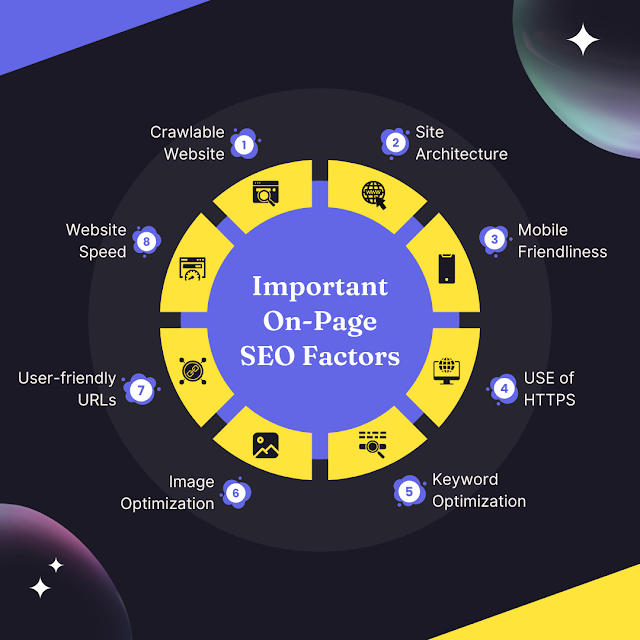Optimizing your blog site for search engines (SEO) is crucial to attract organic traffic and improve your site's visibility in search engine results. Here's a step-by-step guide on how to do SEO for your own blog site:
Keyword Research: Identify relevant keywords and phrases that your target audience is likely to search for. Tools like Google Keyword Planner, SEMrush, or Ubersuggest can help you find valuable keywords with search volume and low competition.
Quality Content Creation: Create high-quality, valuable, and engaging content that focuses on your chosen keywords. Your content should address your audience's needs, answer their questions, and provide them with valuable insights.
On-Page SEO:
Keyword Optimization: Incorporate your target keywords naturally into your blog post's title, headings, subheadings, and throughout the content.
Meta Tags: Write compelling meta titles and descriptions for your blog posts that include your main keywords and encourage clicks.
URL Structure: Create SEO-friendly URLs that include relevant keywords and are concise.
Internal Linking: Link to other relevant posts within your blog to improve navigation and spread link authority.
Optimize Images: Use descriptive alt tags for images, compress images for faster loading, and consider using appropriate keywords in image file names.
Mobile-Friendly and Fast Loading: Ensure your blog site is responsive and optimized for mobile devices. Page speed is a crucial factor in SEO, so optimize your site's loading times by minimizing code, using browser caching, and optimizing images.
Technical SEO:
XML Sitemap: Create and submit an XML sitemap to search engines to help them crawl and index your content more efficiently.
Robots.txt: Use a robots.txt file to guide search engine bots on which pages to crawl and which to avoid.
Schema Markup: Implement schema markup to enhance your content's visibility in search results by providing structured data.
Canonical URLs: Use canonical tags to avoid duplicate content issues.
Backlink Building: Earn high-quality backlinks from reputable and relevant websites. Guest posting, collaborating with influencers, and creating shareable content can help you acquire valuable backlinks.
Social Media Engagement: Share your blog posts on social media platforms to increase visibility and drive traffic. Social signals can indirectly impact your SEO.
User Experience (UX):
Ensure your site is user-friendly, easy to navigate, and has a clear site structure.
Use clear and readable fonts, proper formatting, and break up long content with headings and bullet points.
Make sure your site is accessible to all users, including those with disabilities.
Regularly Update and Refresh Content: Keep your blog content up-to-date and relevant. Regularly update old posts with new information, and consider repurposing content into different formats (videos, infographics, etc.).
Monitor and Analyze: Use tools like Google Analytics and Google Search Console to track your site's performance, monitor traffic, keyword rankings, and user behavior. Adjust your strategy based on the insights you gather.
FULL ON PAGE SEORemember, SEO is an ongoing process that requires consistent effort and adaptation. Stay up-to-date with SEO trends and algorithm changes to maintain and improve your blog site's search visibility over time.
Regenerate






0 comments:
Post a Comment